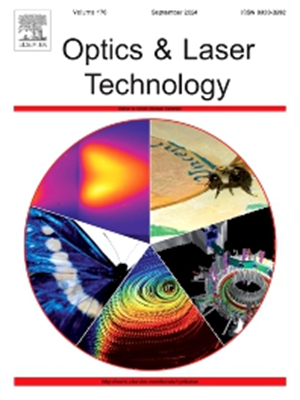Interference data denoising and baseline correction via a multi-scale deep denoising network and multidimensional gradient-consistent regularization
IF 5
2区 物理与天体物理
Q1 OPTICS
引用次数: 0
Abstract
The complex process of spectral inversion often results in the degradation of essential information, with noise and baseline signals significantly impacting the precision and accuracy of material analyses. Recent deep learning-based noise and baseline removal approaches exhibit better performance, however, the high spectral resolution characteristics of spatial heterodyne interference data and the scarcity of labeled data still restrict extensive applications and developments of deep learning in this field. To address these issues, we incorporate the signal generation mechanism (e.g., statistical analyses of interference noise and baseline signals) of spatial heterodyne spectroscopy systems to construct a mathematical signal simulation model and corresponding simulation database, which can contribute to circumventing the problem of data scarcity.In light of this, we propose a multi-level signal enhancement network model (InDNet) based on multi-scale local information extraction and transformer-based global information fusion, which simultaneously achieves denoising and baseline correction. Notably, by virtue of the spatial features of the interference pattern, we designed a Multidimensional Gradient-consistent Regularization to supervise the training process of the network. Extensive experiments demonstrate that our method achieves excellent results on both simulated and real datasets (SSIM values of 0.9757 and 0.9827, respectively), significantly outperforming methods such as PDNet and LRDUNet. Our approach effectively accomplishes both denoising and baseline correction tasks, indirectly confirming the validity of the interference data simulation model. This study provides insights into the intelligent processing of spatial heterodyne interference data and offers new ideas for enhancing the quality of spectral signals.
基于多尺度深度去噪网络和多维梯度一致正则化的干扰数据去噪和基线校正
光谱反演过程复杂,往往会导致基本信息的退化,噪声和基线信号严重影响材料分析的精度和准确性。近年来基于深度学习的噪声和基线去除方法表现出较好的性能,然而,空间外差干扰数据的高光谱分辨率特性和标记数据的稀缺性仍然限制了深度学习在该领域的广泛应用和发展。为了解决这些问题,我们结合空间外差光谱系统的信号产生机制(如干扰噪声和基线信号的统计分析),构建了一个数学信号仿真模型和相应的仿真数据库,有助于解决数据稀缺的问题。为此,我们提出了一种基于多尺度局部信息提取和基于变压器的全局信息融合的多级信号增强网络模型(InDNet),该模型同时实现了去噪和基线校正。值得注意的是,利用干扰模式的空间特征,我们设计了一个多维梯度一致正则化来监督网络的训练过程。大量的实验表明,我们的方法在模拟和真实数据集上都取得了很好的结果(SSIM值分别为0.9757和0.9827),显著优于PDNet和LRDUNet等方法。我们的方法有效地完成了去噪和基线校正任务,间接证实了干扰数据仿真模型的有效性。该研究为空间外差干扰数据的智能处理提供了新的思路,为提高光谱信号的质量提供了新的思路。
本文章由计算机程序翻译,如有差异,请以英文原文为准。
求助全文
约1分钟内获得全文
求助全文
来源期刊
CiteScore
8.50
自引率
10.00%
发文量
1060
审稿时长
3.4 months
期刊介绍:
Optics & Laser Technology aims to provide a vehicle for the publication of a broad range of high quality research and review papers in those fields of scientific and engineering research appertaining to the development and application of the technology of optics and lasers. Papers describing original work in these areas are submitted to rigorous refereeing prior to acceptance for publication.
The scope of Optics & Laser Technology encompasses, but is not restricted to, the following areas:
•development in all types of lasers
•developments in optoelectronic devices and photonics
•developments in new photonics and optical concepts
•developments in conventional optics, optical instruments and components
•techniques of optical metrology, including interferometry and optical fibre sensors
•LIDAR and other non-contact optical measurement techniques, including optical methods in heat and fluid flow
•applications of lasers to materials processing, optical NDT display (including holography) and optical communication
•research and development in the field of laser safety including studies of hazards resulting from the applications of lasers (laser safety, hazards of laser fume)
•developments in optical computing and optical information processing
•developments in new optical materials
•developments in new optical characterization methods and techniques
•developments in quantum optics
•developments in light assisted micro and nanofabrication methods and techniques
•developments in nanophotonics and biophotonics
•developments in imaging processing and systems

 求助内容:
求助内容: 应助结果提醒方式:
应助结果提醒方式:


